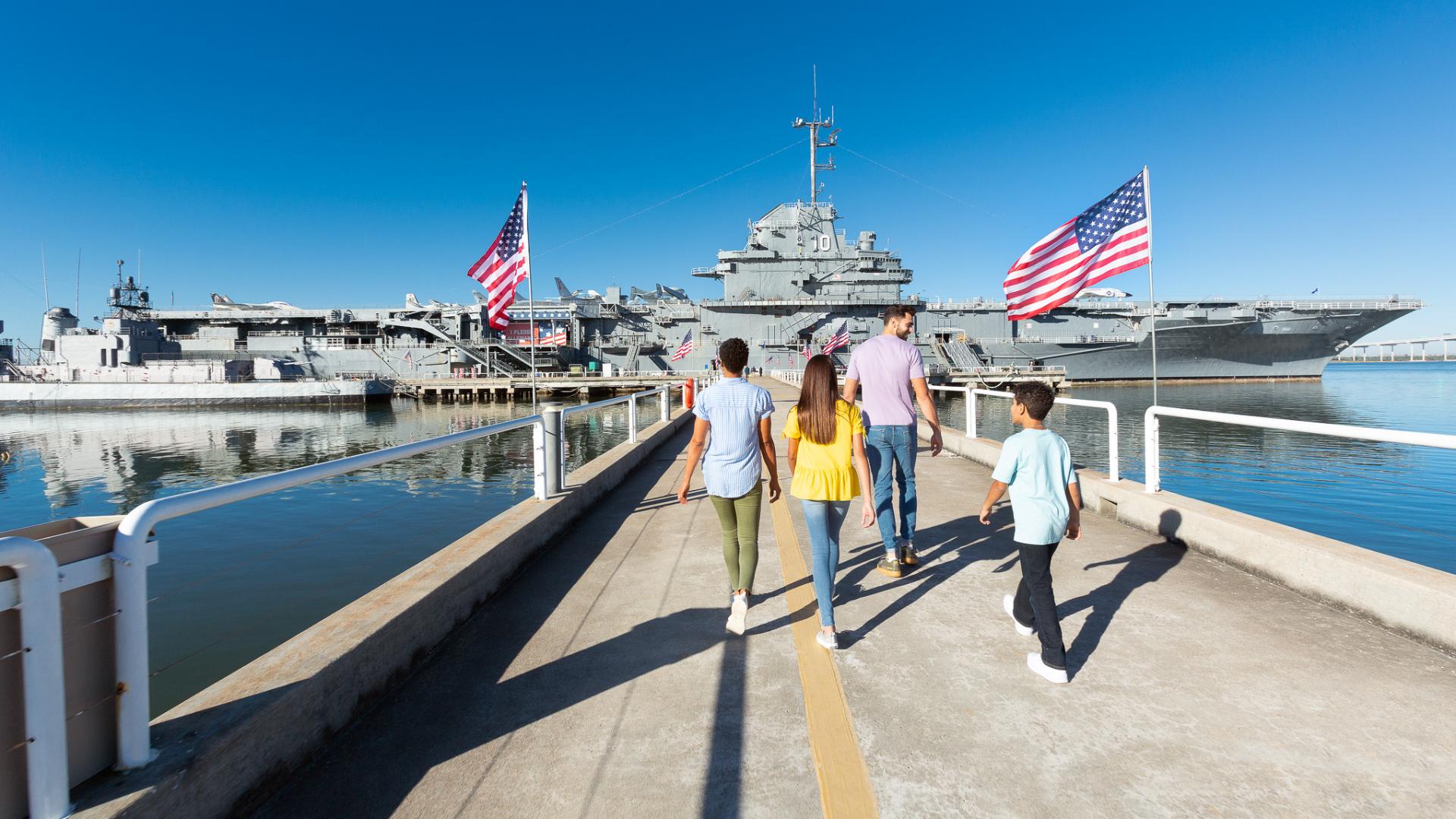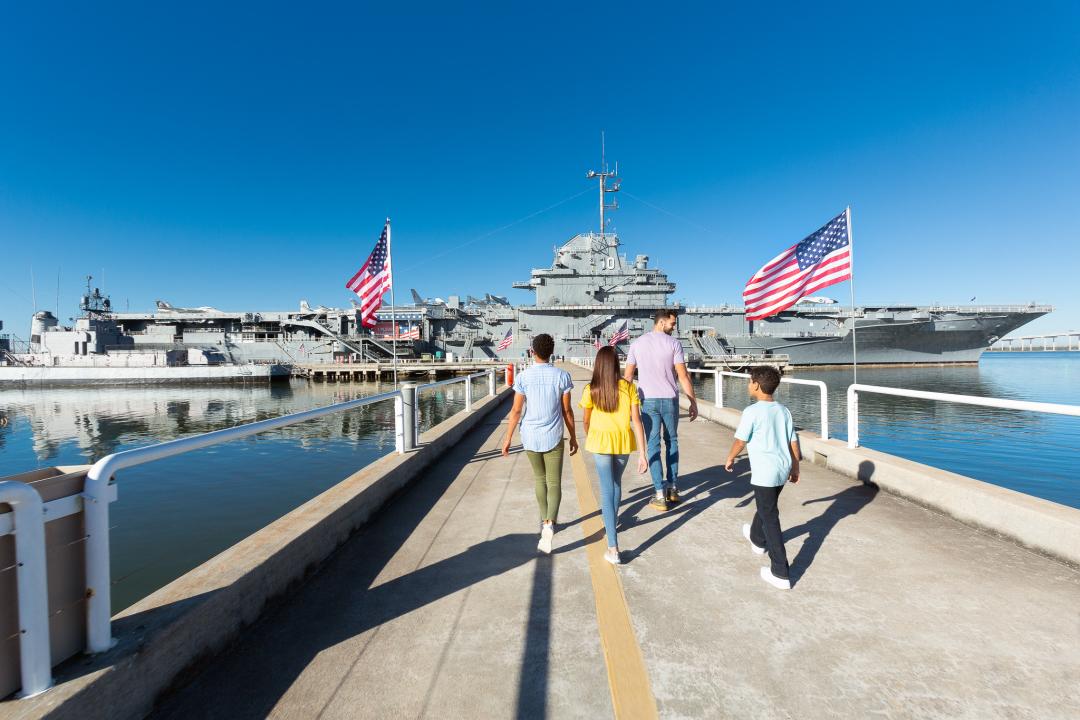Welcome to the Vietnam Experience at Patriots Point Maritime & Naval Museum. You are entering the exhibits that will lead you through a recreated Combat Fire Support Base which was common during the war in Vietnam. For many young military and naval personnel serving in Vietnam, it was their home away from home sometimes for days, sometimes for weeks, and, for some, for months.
A fire support base was an encampment outside and away from the large military cantonments such as Da Nang, Cam Ranh Bay, Tan Son Nhut, Saigon, and other large military cantonments existing mostly along the coast of what was then the Republic of Vietnam. It was a concept of placing our military forces out in locations typically used by the opposing forces, somewhat reminiscent of the old western forts during the wars against Native Americans during the 1800s.
The original conceptual use of a fire support base was a temporary firing base (FSB) for artillery, although many evolved into more permanent bases with a variety of missions. Their main components varied by size, military service occupying the base, their mission, and its perceived permanency. A typical FSB usually had artillery batteries, some combat engineers permanently on station for construction and maintenance projects, a couple of landing pads for helicopters a Tactical Operations Center (TOC), an aid station staffed with corpsmen/medics, and in some cases, a doctor, a communications bunker, and a company (+ or -) of infantry serving as the defense garrison, and/or patrols outside the base. Large FSBs might also have more artillery batteries and larger infantry units such as a battalion or more. Some had an actual runway for fixed-wing aircraft and were staffed for more permanency in operations.
Patriots Point has constructed a fire support base with elements of each military service included within its confines. Something associated with each service can be identified as you move through the compound.
Today, for the average young student in school, or perhaps for most young Americans, Vietnam is a place. People vacation there. Many clothing and furniture items are made there. Vietnam and America are friends and allies. However, for many older Americans, Vietnamese, and other allies of American involvement in the Vietnam War, Vietnam is both a place and an emotion, It is now more than fifty years ago when young Americans answered their countries call, and they marched to the sound of the guns. Like their fathers, grandfathers, and older brothers, they responded to the call of their country; but, unlike the veterans of those past wars, and the veterans of our recent wars, and the one currently underway, they returned to a nation who had turned their back to them. They served, and served well, but received no ticker-tape parade, no airport crowds applauding their return, no gratitude of a nation. For the first time in American history, the returning warfighter was shunned.
Our museum welcomes all through its portals, especially the Vietnam Veteran. Every February we offer Vietnam Veterans Day.
Let us tell you one small story of those young Americans and their service by walking through the Vietnam Experience.
Let’s get started:
(1) As you enter the complex notice the memorial dedicated to members of South Carolina’s First Congressional District who were killed in the war zone of the Vietnam War. An estimated 895 South Carolinians died in that war.
(2) Moving on, notice the Cobra Helicopter Gunship. It’s an AH-1J. Several varieties of Cobra’s were manufactured for the Army and Marine Corps. The Marine version was a twin-engine gunship. Its design is a flying gun platform sporting a 20mm rotating machine gun, rocket launchers, and bomb racks. This gunship has a crew of two.
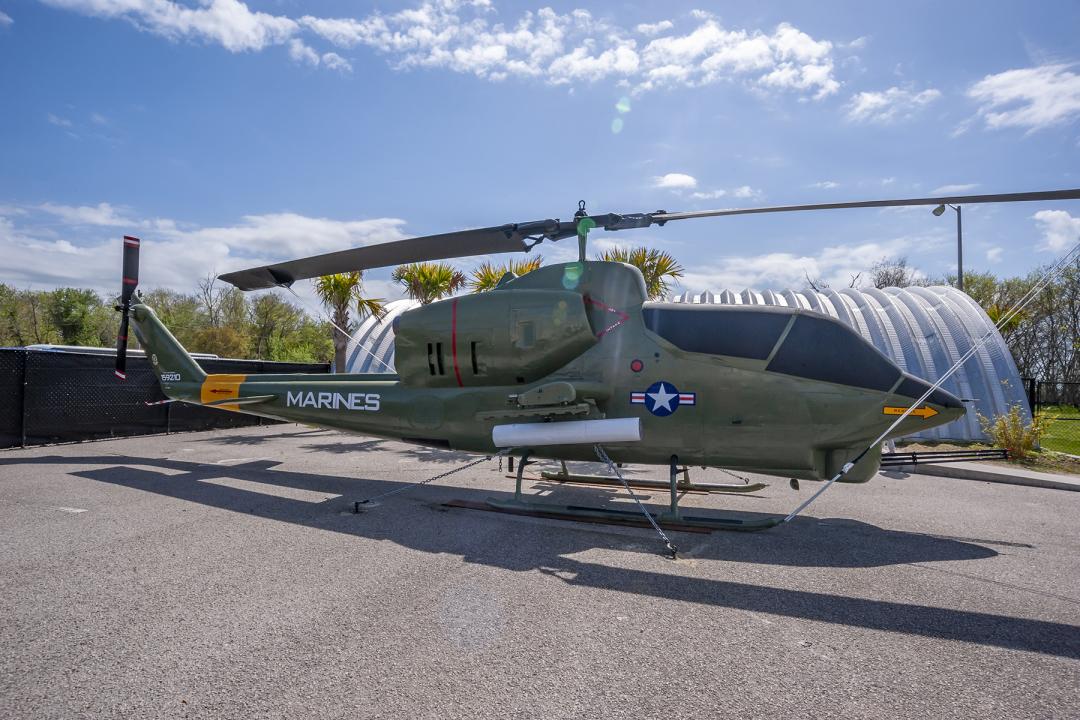
(3) Entering the front door of the metal Quonset hut, notice the various displays such as the time-line of the two wars in Vietnam, one with the French and the second with the Americans and allies. An M151A1 jeep marked as Military Police, A Vespa (French made) scooter common on the streets of Vietnam cities. An informative video display set-up is next. A mock-up of a military prison camp located in then North Vietnam, near the back door which is the entrance into the firebase itself. An exhibit of Special Forces along with displays of Montagnard exhibits. Then, you’ll see an actual sampan, which were, and are very common on the waterways of Vietnam. Next, a diorama exhibit which displays items very common in the many fire-bases during the war. And, finally, a brief weapons exhibit. Inside the Theatre is a film consisting of returning veterans, and some other people who were here to greet the returning Vietnam Veterans.
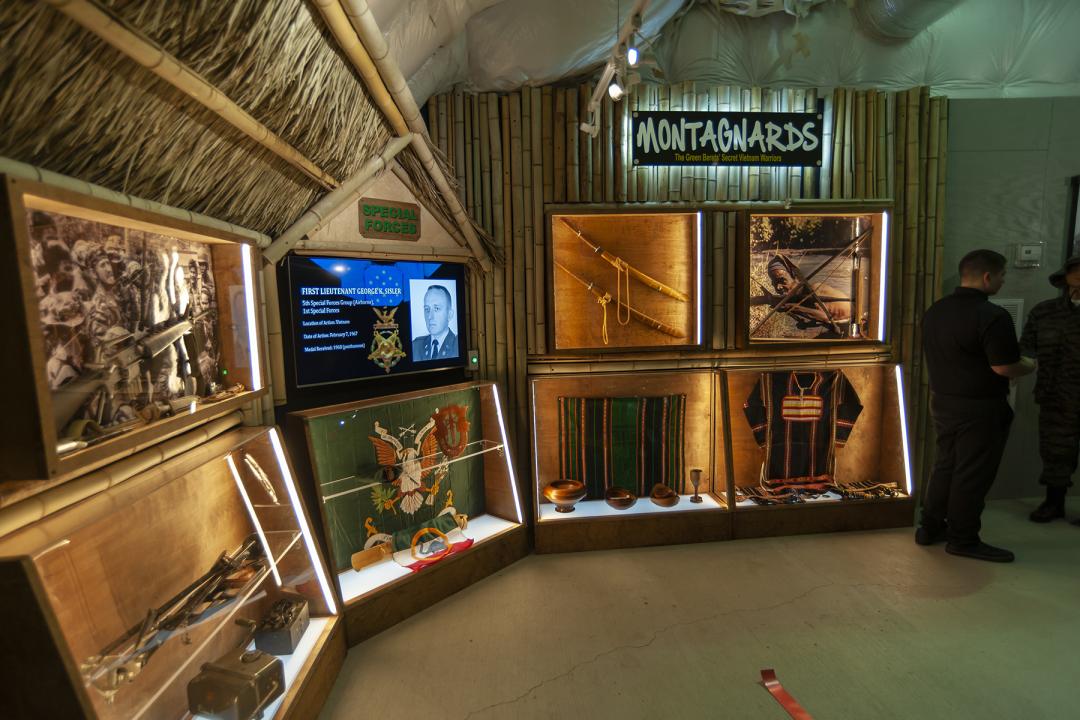
Now, exit the back door and move into the recreated firebase.
(4) As you exit, on your right is a UH-1M “Huey” and memorial to the Navy SeaWolves, of the 116 Helicopter Assault Squadron, a special helicopter unit in Vietnam performing a variety of missions including supporting the river patrol boats, which you will see on your left as you depart the Sea Wolf’s area and cross the small bridge onto the Navy patrol boat “dock.”
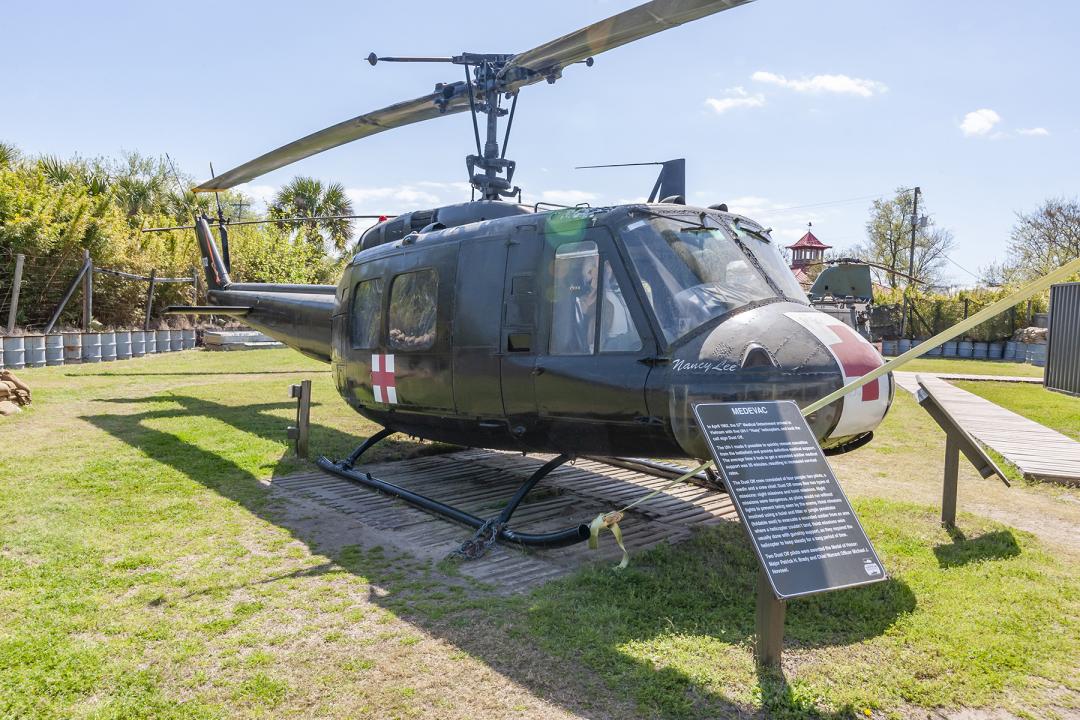
(5) On the “dock,” a TV monitor tells the story of the Brown Water Navy in Vietnam through the eyes and actions of the most decorated sailor of that war. Turn around to view an actual Patrol Boat River (PBR) of the Vietnam War era. These boats were attached to a much larger “Mother” vessel (boat), usually anchored in the waterway, containing supplies, medical services, living accommodations to keep these boats and crews as comfortable as possible when not actually out on patrol. When (not if) the boat and crew made contact with enemy forces, that Sea Wolf helicopter would respond to provide additional firepower from above. Turn around again and on the edge of the “dock” you’ll find a map of Vietnam.
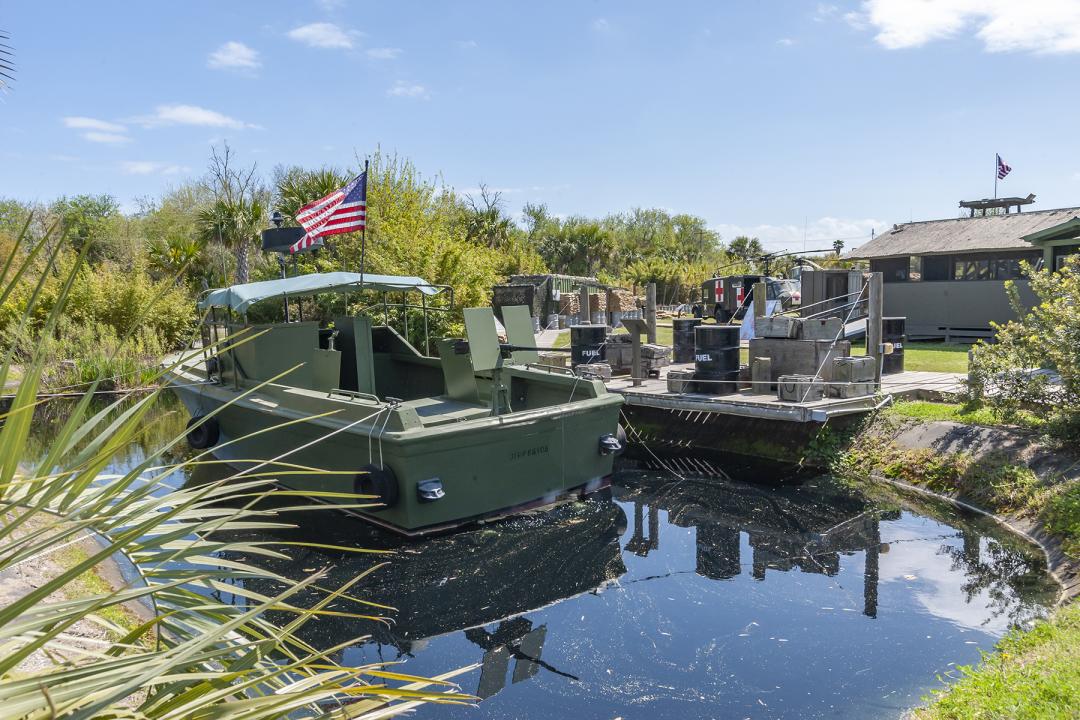
(6) As you are facing the map, with your back to the PBR, look to your left and walk along the planking to the TET Offensive sign. This sandbag bunker is an exact replica of the type of bunkers used in Vietnam. They were everywhere. They serve as a fighting position and a means of protection from enemy fire, or— Incoming!!
(7) Walk just a bit more to what we call the “command bunker.” In this case, it is a connex box (shipping container) made into a comfortable space to be. Open the door and enter the bunker. Press the button in the monitor, have a seat and observe a sudden night attack on a firebase in Vietnam.
(8) As you exit the command bunker just to your left front is a Jeep Field Ambulance.
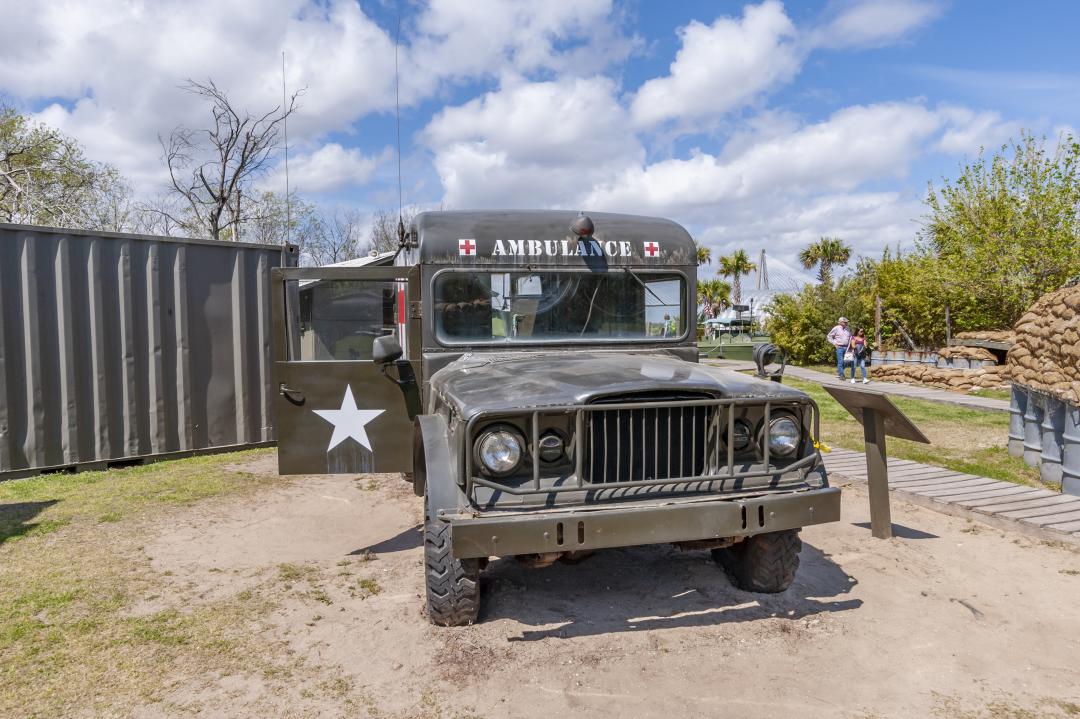
(9) As you pass the ambulance, on your left is a communication’s shack or, Com Shak. Step inside and observe and listen to actual recorded radio traffic from a fire-base to outside units perhaps on patrol, to aircraft overhead, and to other fire-bases.
(10) As you exit the Com Shak, the mess hall facility is the first of three Southeast Asia huts. They were called hooches, or hootch. The mess hall may or may not be a structure in a firebase. It depends on many factors. Food could be prepared on-site or could be flown in by helicopter. When normal hot chow was not available, C-Rations or C-Rats were consumed by the individual. Officially, the canned ration was a combat ration, hence the C, In forward positions commanders frowned on mess hall structures that placed large numbers of men together in one place. None-the-less, some fire support bases had them. Walk in; check the menu out, watch the film. Enjoy a break.
(11) As you depart the mess hall, the next building is a barracks, or living hooch. Here the men had the opportunity to personalize some space, listen to the radio, play tapes, read and write letters, and sleep in relative comfort. Outside every living hooch was a protective bunker. Some men stacked sandbags around their bunk for added protection. Always present would be their individual weapon, helmet, flack vest, and boots, for a grab and run, or to drop into a fighting position. Every bunker and/or fighting position had known and marked sectors or zones of fire, including limit lines to ensure you didn’t fire on your own men, which every man would be knowledgeable of. But most days, usually, the day would pass without incident requiring firing on an attacking enemy. Walk through the hooch, listen to Far East Network (FEN) Radio in 1968. Observe how men lived in their home-away-from-home.
(12) The next building is, on one end, a gedunk/mailroom, and on the other, an aid station. The gedunk/mailroom is a place where the men could drop off and pick up their mail. It was also a place where they could grab a soft drink, a candy bar, a comic book, a pack of cigarettes, or, if allowed, a cold beer (one or two a day). The other end of the building depicts a surgeon operating on a wounded man attempting to stabilize the patient and save a life. This aid station was usually the closest field medical facility to the injured man. Once stabilized, a helo would airlift the person to a hospital or hospital ship off the coast of Vietnam.
(13) Turn around while facing the aid station and observe a typical observation tower like ones found at some fire support bases. At night the person in the tower would observe the terrain with a Starlight Scope, a primitive night-vision telescope. He also manned the machine gun. Adults are encouraged to accompany their non-teens up to the observation area.
(14) Behind the tower is a UH-1H Iroquois Medical Evacuation helicopter.

(15) Next to the UH-1H is a Marine Corps UH-34D Sea Horse helicopter used for combat missions early in the war. Later its use was more logistical hauling.
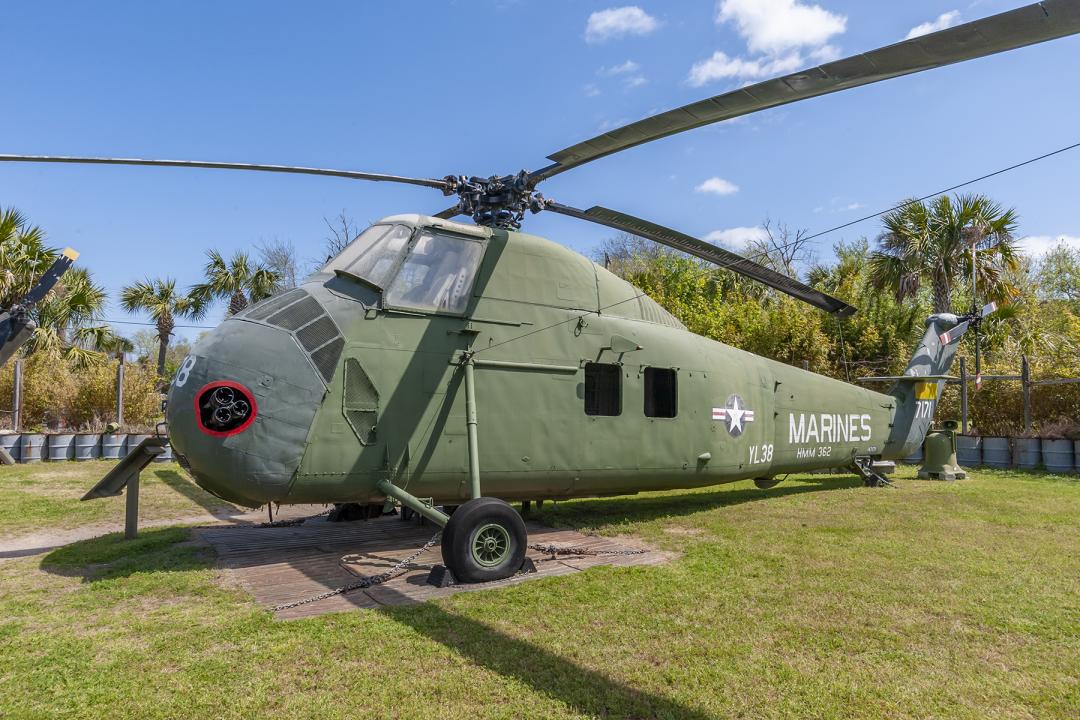
(16) The US Army Armored Personnel Carrier (APC) was donated to the museum imprinted with USMC. This tracked vehicle was used by the US Army extensively during the Vietnam War, and, as history reveals, it was used a few times to haul Marines.
(17) Prior to going into the tunnel, note the Latrine (Army/Air Force term, or Head (Navy/Marine Corps term), which facilitates a means of capturing and disposing of human body waste. In short, it’s a toilet. Believe it or not, it is one of the more important structures in a firebase. This depicts a two or three-hole platform to drop body waste into half of a 55-gallon metal drum. At a given time, a person or two must pull the half barrels out from under the structure, pour fuel of some type into each drum, and ignite it to burn-off the waste. Then, once complete, reinsert the drums back under the head structure. Sanitation is vital to the encamped men. Lack of proper sanitation has crippled more armies than bullets.
(18) As you pass through the tunnel into the Khe Sanh area, please note the narrator describing the event in 1968 Vietnam. Khe Sanh could have been to the Americans what Dien Bien Phu had been to the French. Dien Bien Phu was the decisive battle between the French and the Vietnamese in 1954. The French forces were defeated, and France gave up its colonies in French Indo China. At Khe Sanh, the American Marines, when ordered into the old French military base, captured the high ground around the base. Hills 868, 861, and others were held by company size forces and resupplied, and protected by air. The battle raged for days, weeks, and months. An estimated 6,000, mostly Marines with a few US Army and Air Force personnel, Fleet Marine Force sailors, and South Vietnamese soldiers, stood against an estimated 20,000 North Vietnamese Regular Army forces from January through July 1968. The combat base was ordered closed which infuriated the Marines who had held it as ordered. One Marine was heard to say, “Politics closed down Khe Sanh, not the NVA.”
(19) As you exit the tunnel note the 105mm artillery piece in its firing position at Khe Sanh,
(20) The upside-down M-151A2 Jeep you see depicts a recently destroyed vehicle from enemy shelling.
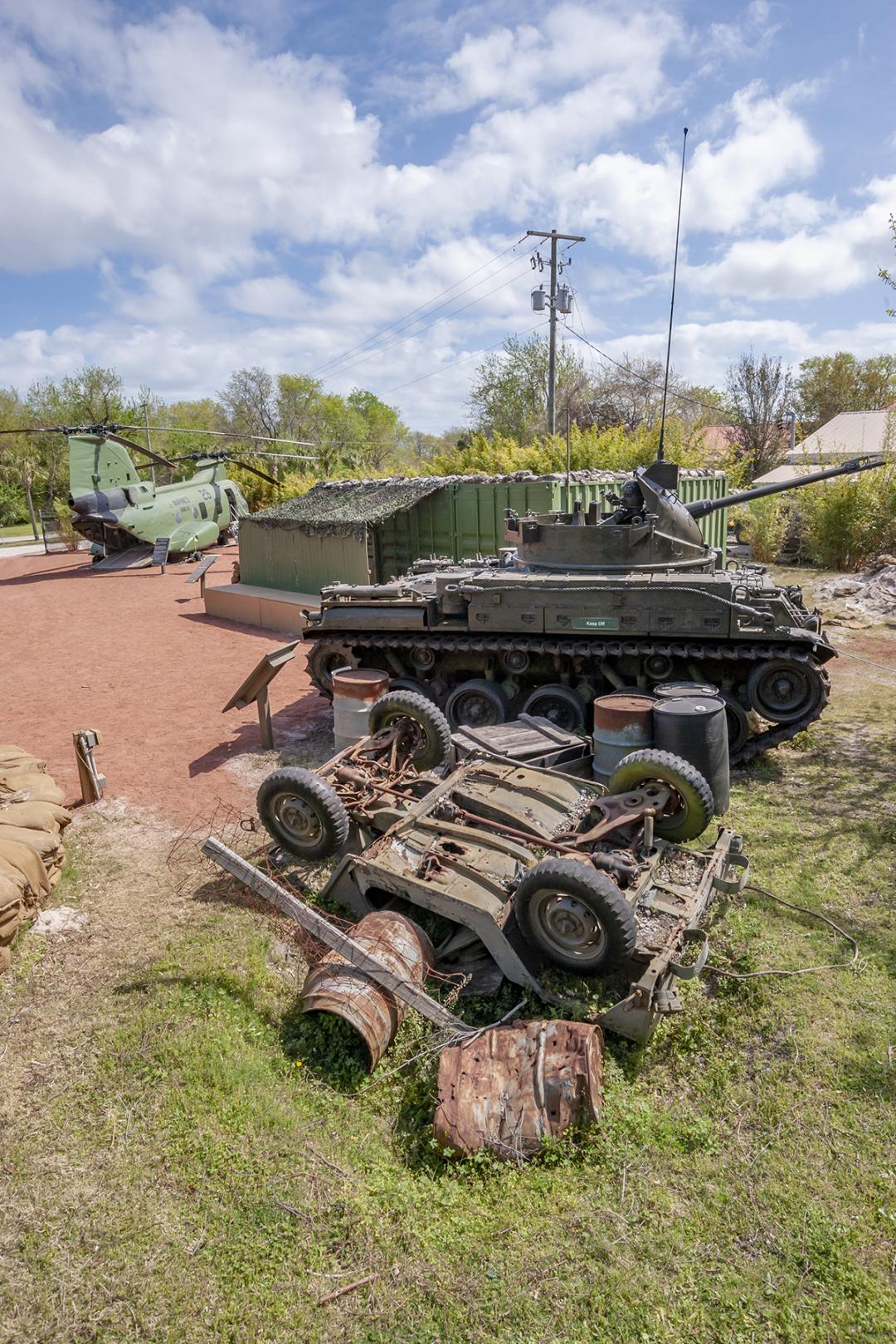
(21) The M-42 Duster. A total of 3,700 M42s were built. The vehicle had a crew of six and weighed 22,500 kg (49,500 lb) fully loaded. The maximum speed was 45 mph with a range of 100 miles. Armament consisted of fully automatic twin 40 mm M2A1 Bofors, with a rate of fire of 2×120 rounds per minute (rpm), and either a .30 caliber Browning M1919A4 or 7.62mm M60 machine gun. The 500 hp, six-cylinder, Continental (or Lycoming Engines), air-cooled, gasoline engine is located in the rear of the vehicle. It was driven by a cross-drive, two-speed Allison transmission. The Duster was never used as an anti-aircraft gun, but was effective in Vietnam as a ground defense weapon.
Note in the combat film footage inside the command post building a brief view of these twin 40mm guns firing.
(22) Command Post Bunker - Inside is a short segment of combat footage of the battle of Khe Sanh. Inside the CP is a sitting area, a field desk, footlocker, and other equipment, along with a detailed map of Khe Sanh.
(23) The M-107 Water Trailer is being towed by an M-35, a two and a half-ton Cargo Truck. This truck was commonly called a six by six, or a Duce and a half truck.
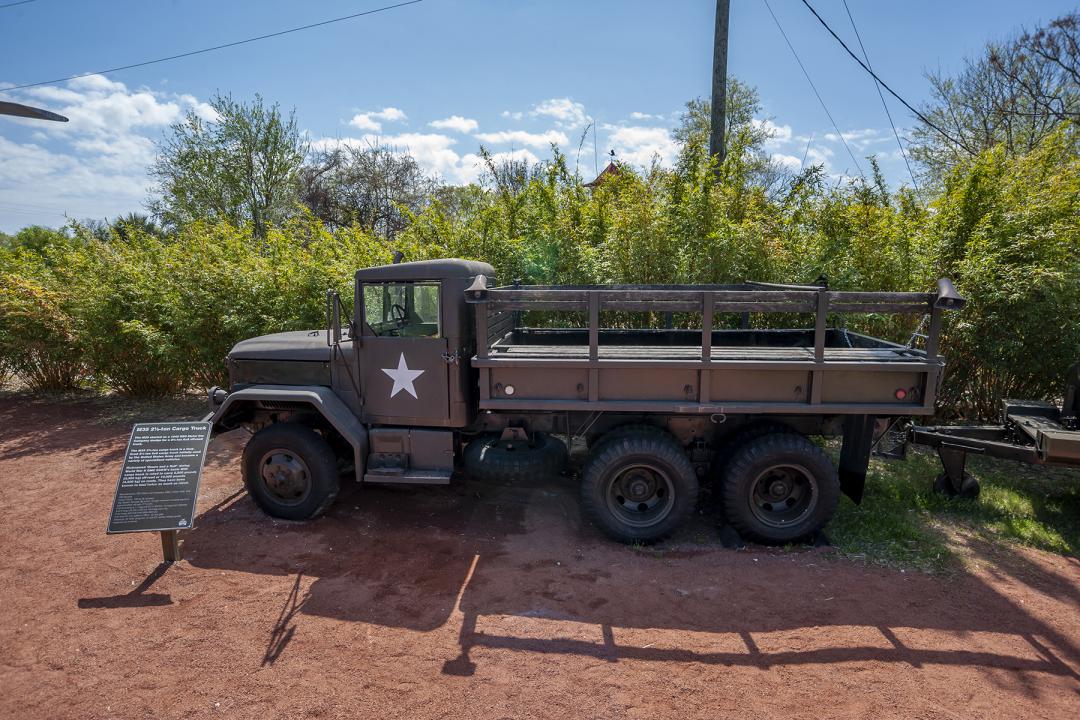
(24) Finally, we conclude our walk through the Vietnam Experience with a CH-46 Marine Corps helicopter. Walk aboard. Listen to the radio traffic. This helicopter is dedicated to two Marine aviators who died evacuating Americans and our allies from Saigon. Captain William Nvstul and First Lieutenant Michael Shea crashed into the sea while hovering, waiting for space to touch down aboard. Though their crewmen were recovered, these two Marines were lost at sea. They have never been recovered.
Written by Stoney Bates.
Stoney had a long and distinguished career in the US Marine Corps and law enforcement. He joined the Marines in 1955. Early he was a drill instructor and marksman instructor at Parris Island as well as a Military Police sergeant. He completed the WO training and Basic School, Quantico, VA in 1964. He was promoted to warrant officer (CWO-2) in 1965 and lieutenant in 1966. He served as a Criminal Investigation Officer in Vietnam from 1968 to 1969 as well as commanding a combat unit conducting ground combat against the VC and NVA during the TET Offensive in 1968. In 1969 he was promoted to Captain and from 1970 to 1973, Stoney was an instructor at the US Army Military Police School. He then graduated from Sam Houston State University with a degree in criminology and was promoted to Major. In 1977-1978 he was executive officer of Camp Fuji Japan; from 1978 to 1980 Provost Marshal Okinawa, Japan; and from 1980 to 1981 Provost Marshal 29 Palms, California. In 1981, Stoney was promoted to Lieutenant Colonel and retired from the Marines after 26 years of service. Stoney has written books including Short Rations for Marines, A Marine called Gabe, Back Step and An American Shame: The Abandonment of an Entire American Population.
